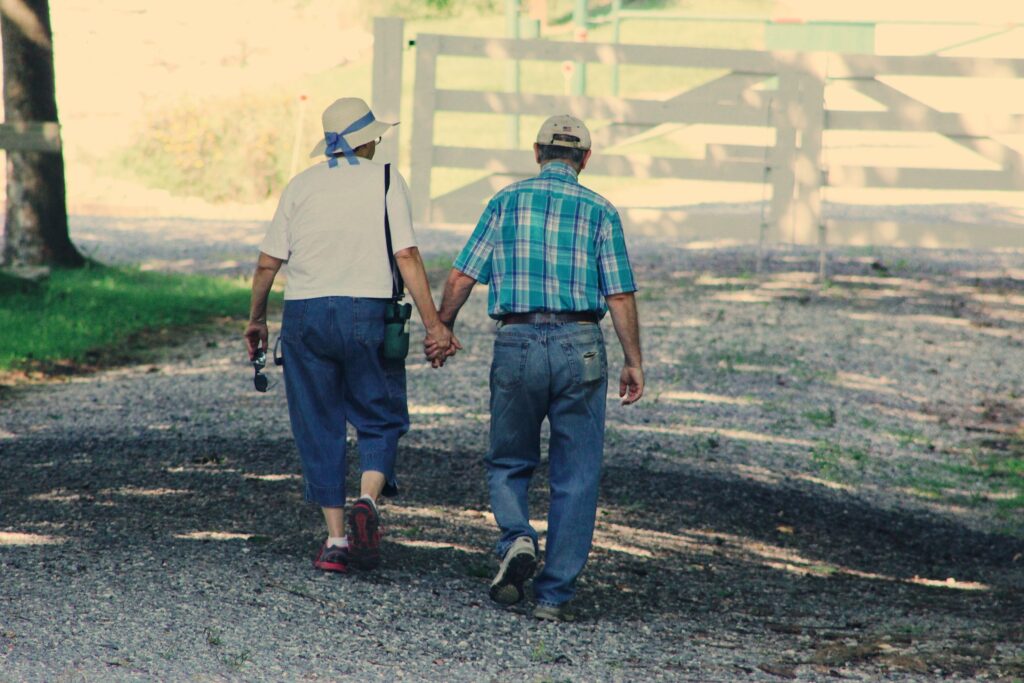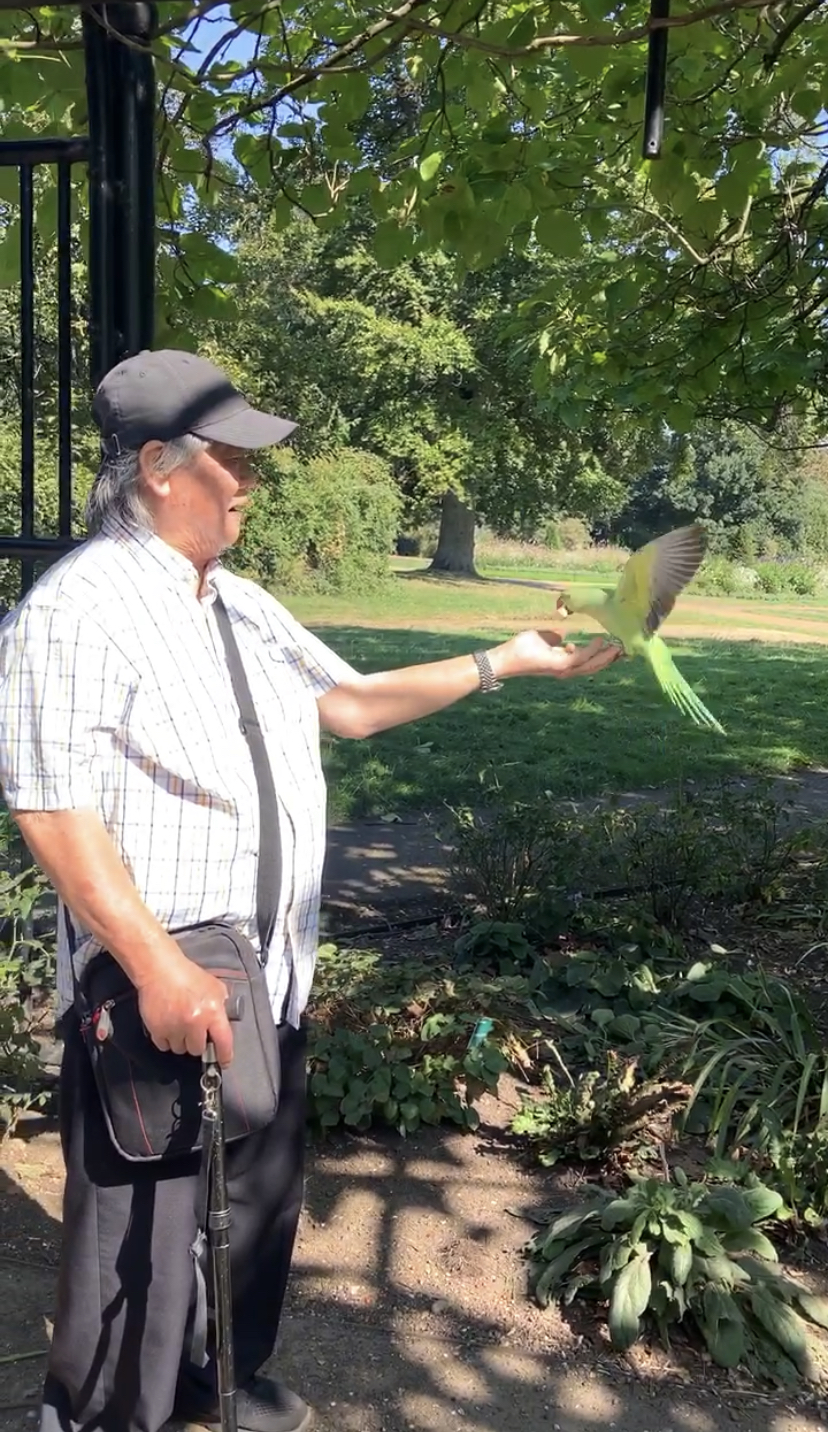Are you or an elderly relative struggling to move? Are you experiencing pain or reduced mobility in your daily activities? In this blog post, I share the case study of one of my clients (who we’ll call Margaret for confidentiality reasons), together with some tips to maintain and improve stability and mobility in the elderly.
Margaret’s case study – a lady in her 80s
Margaret is a lady in her 80s. She was already a client at our clinic prior to the first lockdown in 2020. At that point, she would regularly visit our gym for exercise. She’d also walk her dog, drive her car, and live confidently on her own. Even before March 2020, Margaret had reported losing some stability in one of her legs and experiencing a slight deterioration in mobility. But it was during the lockdown that things got progressively worse for Margaret.
A bad fall meant she lost her confidence, so she started doing less and less on her own. She stopped going to the gym and driving, she wouldn’t go out as much, she employed cleaners to take care of tasks around her home, and a dog walker to take her dog out. Unfortunately, this led to Margaret slowly becoming home-bound and relying on carers for daily activities.
A few weeks ago, I was called to Margaret’s home for an emergency appointment. A regular wheelchair user by that point, Margaret was experiencing pain in her shoulder too, which meant she was struggling to move from the chair to her Zimmer frame.
Rehabilitation with Margaret
When I saw Margaret in her home, it became clear how little she was moving. Her carers would push her wheelchair around her home and take care of most things, and I even noticed how Margaret had got out of the habit of using her right hand. She wasn’t leaving the house anymore and doing very little in terms of movement. This was way more than no longer going to the gym, driving, or walking her dog. She’d actually stopped doing everyday tasks in order to look after herself and her basic needs.
Sadly, Margaret had lost the ability to move because (in simplistic terms) her brain ‘forgot’ how to do it. Our brains are neuroplastic, which means they can modify, change, and adapt throughout life in response to different environments and experiences. This is a fantastic feature of the brain – it means we can learn new things and always create new pathways. It’s how the brain and the body can recover and heal after an injury, for example.
But the saying “use it or lose it” really goes here. Margaret had stopped moving and performing basic functions, which meant that those pathways she’d relied on before that point were no longer available for her to access.
During my 2-hour visit, I spent time reassuring Margaret and boosting her confidence. We performed a range of simple rehabilitation and task-oriented exercises, like playing catch and release with a ball across the table to improve her reaction and her right-hand grip. By the end of the session, Margaret was able to stand from her wheelchair and use a walker.
But the key thing I left Margaret with was the strong recommendation to continue moving. It’s important that she now creates new pathways in her brain – pathways that stick this time. If she stops and takes an activity away, she will lose it again. Hopefully, I left Margaret with the knowledge and determination not to get that bad again.
Losing mobility and stability isn’t a given – my Dad’s example
While decreasing mobility and stability might be common in the elderly, it’s not something we should accept. In fact, function and mobility are key for ageing adults. Losing stability leaves the elderly more exposed to the risk of injury and further complications.
It’s why I particularly stressed with my own Dad the importance of moving during lockdown, for example. In these videos, you can see my dad feeding parakeets and ducks in the park. I also made sure he carried out daily and weekly tasks like cooking and cleaning the house. When socialising indoors wasn’t possible, my Dad even found new ways to cook and share food with me safely and outside in the open. And I believe that the reason why two years later he’s still able to go and visit friends by train (rather than relying on a taxi or an Uber, for example) is that he continued to do things for himself – to move and perform tasks to care for both himself and his home. And that’s crucial for someone his age.
Tips to improve stability and mobility in the elderly
To avoid getting into the situation my client Margaret found herself in, which is not ideal in terms of health or quality and enjoyment of life, here are some tips you (or your elderly relatives) can follow in order to maintain and improve your stability and mobility.

Walking and moving
- Walk. It doesn’t have to be too far or too long. A minimum of 10 minutes a day is all that’s needed. But it’s important that this happens regularly – ideally every day.
- Go to the gym. You don’t have to do any strenuous exercise. If you’re unsure what to do, ask the PT there, who can recommend exercises that will work for your personal situation and abilities. The fact of leaving the house and going to the gym is already beneficial in itself and will contribute to maintaining the brain’s neuroplasticity.
- Take your dog for a walk. If you have a dog, take them out for a walk. Try not to outsource this task to someone else – moving is important, and it will ensure you don’t lose some of your mobility. You could even meet up with a friend or other dog owners, and walk together.
Staying social and performing task-oriented activities
- Stay social. Whether it’s bridge, Bingo, or embroidery, stay social. Join clubs or get together with other people who share your interests and hobbies – whatever they might be. It’s never too late to start a new hobby, and if you’re open to looking, you’ll always find someone who’s in the same boat. You can find clubs and groups for pretty much anything, so make sure you check your local library or community centre to see what’s available in your area. The action of going out, meeting other people, and carrying out task-oriented activities will prevent deterioration, and it will certainly help you not lose your confidence.
- Perform tasks around the house, such as cleaning and cooking. It’s easy for adult children to want to ‘mollycoddle’ their elderly parents. As a society, we tend to think the elderly shouldn’t perform what are seen as more physical, demanding, or taxing tasks. But as you can see from Margaret’s example (and in contrast with my Dad’s example), once you stop doing these activities, your body can start deteriorating as a result.
- Use public transport. Again, as much as it might be tempting to use a taxi or an Uber, wherever you can, use public transport. The task of planning the journey is important in itself, as it helps with keeping your brain active and alert as well as your body moving.
Would you like some help?
If you or an elderly relative have been affected by reduced stability or mobility and would like some help, feel free to contact us by phone at 07976 202 766 or email (info@londonsportstherapy.com) or by filling in this form. Alternatively, you can also book an appointment online or treat a loved one with a gift voucher.

